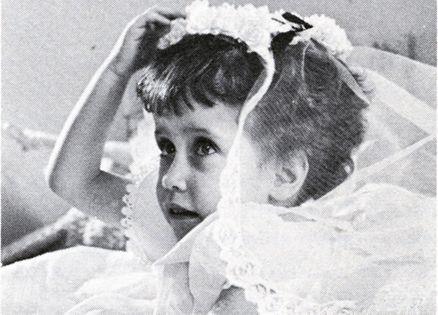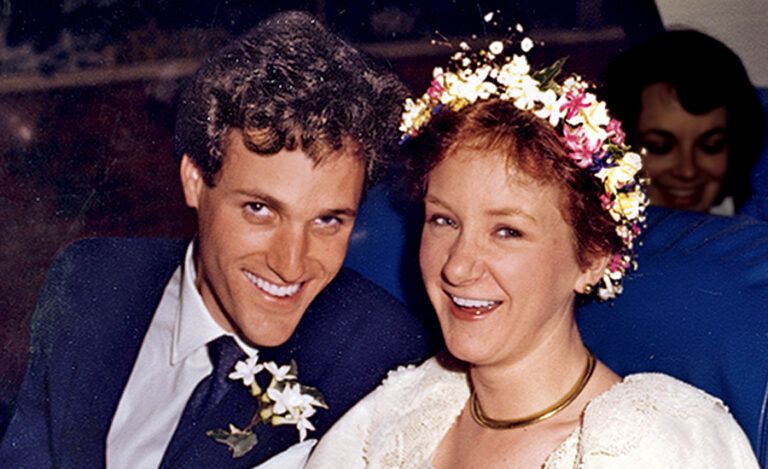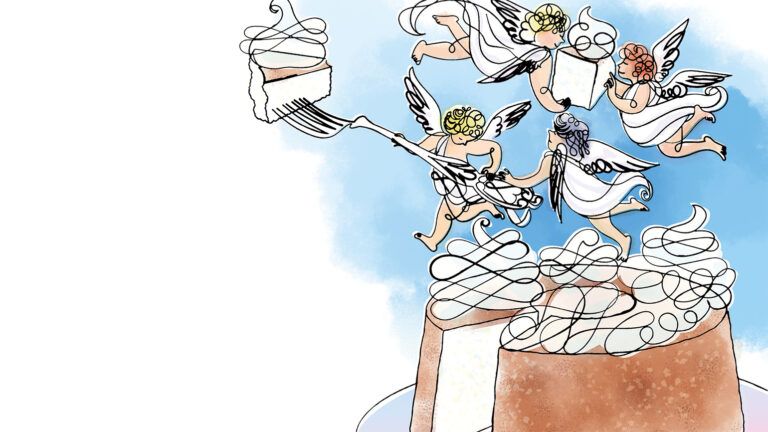“There was a baby born here two weeks ago that no one knows what to do with,” the doctor said into the telephone.
He went on to explain that the infant was a vegetable: a hydrocephalic without sight or hearing or any human potential. The mother had disappeared from the hospital after seeing it and the state had no provision for handicapped children under the age of six.
“It will never live that long,” the doctor’s voice continued hastily. “At the outside it might live six months. Meanwhile there is the problem of care…”
“Bring us the baby,” answered the voice at the other end of the line. It belonged to Sister Marie Patrice, the nun in charge of the day-nursery which the Sisters of Mercy ran for working mothers in and around Charlotte, North Carolina.
Sister Patrice was at the cottage door when a car pulled into the driveway that afternoon. The doctor carried a bundle in, then pulled aside the hospital blanket for the nun to see.
For a moment she could make no sense of the two shapes before her. Then she realized that one was an enormous head; the other, where a back should have been, a tumor the size of the head. Stumps hung where there should have been legs and feet: only the little arms and hands were properly formed.
Sister Patrice stretched out her arms. “Give her to us,” she said.
And so another baby joined the nursery—a baby for whom nobody called when day was over. A “vegetable” was the last thing she made the Sisters think of, for she cried constantly as though in pain. Whenever they picked her up, however, the crying stopped.
So the Sisters began carrying her about with them while they looked after the other babies and while they ate and went to chapel and even while they slept.
Six months came and went. The baby they had baptized Maria grew so heavy that the nuns had to pass her more often from one pair of arms to another.
But she would not startle at a noise, nor blink when a hand was passed before her eyes. Never once in all those months had she given a hint of awareness.
And then one day as Sister Patrice rocked her in the nursery playroom, the unbelievable happened.
“She smiled!” the Sister cried. “Maria smiled at me!”
Sister Patrice was the only one, that day, to see the smile. But a few days later another nun saw it, and then another, until the whole convent glowed with Maria’s smile.
After that, the weeks and months sped by as the Sisters discovered first one talent, then another, in the baby who had no potential.
They plunked the nursery piano and discovered that Maria had hearing. They placed her hands on the light switch just inside the cottage door and discovered that she had the muscle control to turn it on and off herself.
She was playing this favorite game one winter afternoon when she was almost two, making the room bright and then dark again while one of the Sisters held her up to the switch, when suddenly she turned to stare at the bulb burning in the ceiling. Her lips parted.
“Light!” said Maria.
As a first word it could not have been better chosen. For it seemed to the Sisters that with it came light from God about this child, that the next step to be taken in faith was removal of the tumor that dwarfed the little body on which it grew.
The surgeon they consulted was dubious. Without the tumor, he reasoned, all the excess fluid might settle in the head, distending it still further and hastening the inevitable death.
But the Sisters had glimpsed the hope that is stronger than reason. The tumor was removed and the very reverse of the doctor’s fear occurred. Instead of gaining fluid, the head began to drain. Over a period of two years it shrank nine inches until, as Maria herself grew, it looked very nearly normal.
They were wonderful years. The Sisters bought a tiny wheelchair that Maria herself could roll with her strong arms and hands. They made a swing for her and a play table and a special seat in the chapel.
Most important to Maria, they bought her shoes. As other children dream of being ballerinas, Maria dreamed of wearing shoes.
She would never walk, but the Sisters understood that shoes are for more than mere transportation. And so they took her back to the surgeon, and he shaped a place on the unformed legs for shoes to go.
But meanwhile great changes had come to the little cottage on the convent grounds. As word got around that the Sisters were sheltering a handicapped child, another such infant was brought to them. Then another and another.
These children took more time than other babies. Some, like Maria, had to be held constantly. Others went into spasms when touched. Some had to be tube-fed, some needed oxygen.
The Sisters worked around the clock and still the babies kept coming, from all over the state and far beyond: babies with Down’s Syndrome, microcephaly, cerebral palsy. And to the Sisters, God’s light had grown blindingly clear.
There were other traditional nurseries around Charlotte, but for these injured children, there was nowhere else.
I went to visit Holy Angels Nursery wondering how a home that held only handicapped babies would affect me. A curly-haired little girl met me at the door, the ruffles of her starched blue dress concealing the arms of a wheelchair.
“I’m very pleased to meet you,” she said politely, “do you like my shoes?”
Of course it was Maria. Her shoes were white, with little bells on them and lace around the top, and I told her truthfully that they were gorgeous.
Maria and Sister Patrice led me through the sunny new home built with gifts from Protestants, Jews and Catholics from all over the country. And as we walked from room to room, misgiving gave way to a feeling I could not name.
Baby-blue cribs with new toys in them lined walls hung with Mother Goose scenes. Every baby girl wore a pretty dress, every boy a crisp romper, no two alike. Volunteers from a nearby girls’ school crooned to babies in rocking chairs around the room.
It was like stepping into the private nursery of a treasured only child—multiplied by dozens.
I believe they were each an only child to Sister Patrice as she recounted the life-and-death struggle waged over each crib.
“We were so worried about Johnny last week, but penicillin is helping.”
“I did 80 miles an hour getting Ellen to the hospital Thursday. The police gave me two motorcycles, and the convulsion was halted in time.”
“The doctors don’t give George another month. But”—squeezing the tiny hand—”we’re going to fool them, aren’t we, George?”
On we went, crib after crib—67 of them—and in each one, Sister’s favorite child. I saw Jewish babies, Protestants, Catholics, blacks and whites, children of architects and mill hands, doctors and migrant workers. The only thing I didn’t see was a secondhand toy or a threadbare blanket.
“Most of them can’t see, you know,” said the Sister. “That’s why it’s up to us to be sure they have only pretty things.”
We reached the last room and I realized what it was I had been feeling. In each crib Sister Patrice had made me see a person, an individual unique in all creation, a human soul of infinite worth. When I told her so, she beamed.
“Oh, yes!” she said. “And do you know what the greatest moment of all is? When this person leaps free at last from his poor, hurt body!”
She had been at the cribside each time a baby died, she said. “God tells me when he is taking one of them. And then this little person stands suddenly free, whole and straight, more beautiful than you dreamed. It’s only an instant, you know, for these babies fly straight to the heart of God.”
I stared at the Sister, at the bottles of blood plasma behind her, the oxygen tents, the rows of drugs. I hardly knew how to phrase the question that was in my mind.
“Why struggle then to keep them here as long as we can?” she asked for me. She ran her hand through the gold-brown curls that make a halo of Maria’s head.
“God has all the bright angels of heaven for his joy,” she said gently. “We struggling servants of his here below—we need angels too.”
********
Read about Elizabeth Sherrill’s return to Holy Angels four decades after her original visit.
For more information about the numerous books written by Elizabeth Sherrill and her husband, John, visit her website.
Download your FREE ebook, Angel Sightings: 7 Inspirational Stories About Heavenly Angels and Everyday Angels on Earth






